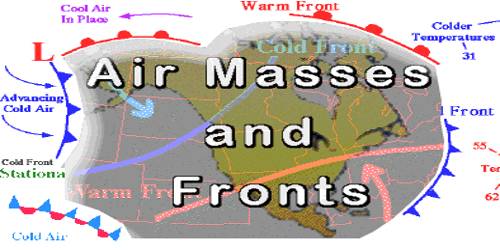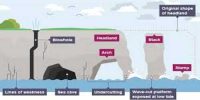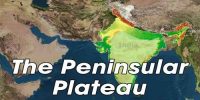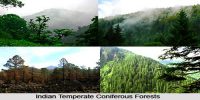Air Masses
When the air remains over a homogenous area for a sufficiently long time, it acquires the characteristics of the area. The homogenous regions can be the vast ocean surface or vast plains. The air with distinctive characteristics in terms of temperature and humidity is called an air mass.
Air masses form over large surfaces with uniform temperatures and humidity, called source regions. Low wind speeds let air remain stationary long enough to take on the features of the source region, such as heat or cold. It is defined as a large body of air having little horizontal variation in temperature and moisture. The homogenous surfaces, over which air masses form, are called the source regions. The air masses are classified according to the source regions. There are five major source regions. These are:
(i) Warm tropical and subtropical oceans;
(ii) The subtropical hot deserts;
(iii) The relatively cold high latitude oceans;
(iv) The very cold snow covered continents in high latitudes;
(v) Permanently ice-covered continents in the Arctic and Antarctica.
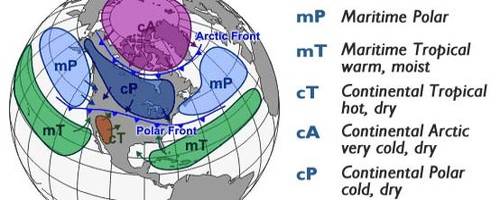
Accordingly, following types of air-masses are recognized:
(i) Maritime tropical (mT);
(ii) Continental tropical (cT);
(iii) Maritime polar (mP);
(iv) Continental polar (cP);
(v) Continental arctic (cA).
Tropical air masses are warm and polar air masses are cold.
